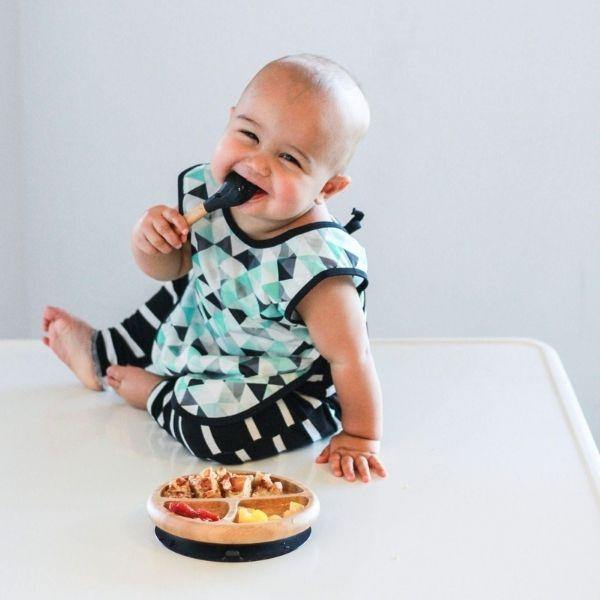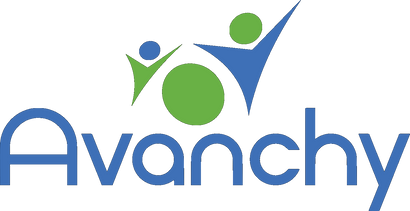BLACK FRIDAY Up to 60% OFF SALE!
BLACK FRIDAY Up to 60% OFF SALE!
Feeding Essentials

How To Begin the Process of Baby-Led Weaning
November 01, 2021 5 min read
If you have a newborn in the house, you know that every day is a new opportunity for learning. As your baby starts growing and exploring, they’ll start to hit exciting milestones such as crawling, sitting up, and saying their first words. All of these skills happen at the baby’s own pace, so why should eating be any different? Baby-led weaning (BLW) is the practice of letting your child explore solid foods at their own pace so that they can learn to feed themselves. Learn more about BLW and what it entails with this guide on how to begin the process of baby-led weaning.
What Is Baby-Led Weaning?
Baby-led weaning splits the responsibility of feeding between you and your child. Parents decide when, where, and what their baby will eat, while baby gets to eat at their own pace and quit when they’re tired or full. This process is a low-pressure way to create a positive eating environment in which your child can comfortably transition to more adult foods.
Why Should You Choose Baby-Led Weaning?
Parents have many reasons to choose baby-led weaning when it’s time to put more solid foods into their babies’ diets. Nutrition is first and foremost in most parents’ minds. Baby-led weaning allows parents to introduce solid foods earlier, which puts more iron and other crucial nutrients into their growing babies’ diet. Additionally, BLW teaches babies self-regulation, which is a healthy skill that can benefit them throughout their entire lives.
Another benefit of BLW is that it builds positive routines. Baby-led weaning puts your baby at the table with everyone else when it’s time to eat. In addition to the positive environment of eating around family, this also introduces your baby to the concept of sating hunger with regular mealtimes.
Baby-led weaning also improves dexterity and motor skills. As babies learn to feed themselves, they develop hand-eye coordination, oral motor skills, and other key abilities that allow them to eat independently.
Finally, BLW gives babies a chance to experiment with new foods from an early age. The earlier kids get to explore different tastes and textures, the less likely they are to be picky eaters as they grow older.
How To Tell Your Baby Is Ready
As always, it’s important to work with your pediatrician to make sure your baby is getting the nutrients they need. Pediatricians usually recommend introducing solid foods to babies’ diet when they’re around six months old. However, this doesn’t necessarily mean your baby is ready to start baby-led weaning at that age. There will be a few signs your baby is ready to safely try experimenting with food on their own.
The ability to sit up is a must. When your baby can sit on their own and support their neck, they’ll be able to safely munch on solid foods. You should also pay attention to your baby’s interest in food. Are they alert during mealtimes? Do they watch as you eat or reach out for food? These are signs that your curious baby might be ready to start trying to feed themselves.
Tools To Get You Started
How can you best set up your baby for success? Starting with the right utensils and dishware helps. Serve your baby’s new meals on plates or in bowls with suction-cup bases that stick to the table. This creates a solid base for your baby to reach for and lowers your chances of major messes.
Also, while babies love their finger food, this is a great time to introduce your little one to utensils. Look for lightweight options with shorter handles that fit comfortably in your baby’s hands. Silicone-tipped forks and spoons are gentle options for your baby’s sensitive mouth. Help your child adjust to using utensils by scooping a spoonful or forkful for them, then holding it out for them to grab.
Remember, while these tips can prevent some spills, a little mess is part of the learning process. That’s why the baby plates and utensils from Avanchy are machine washable, making it easy for you to worry less about cleanup and to simply enjoy mealtimes with your little one.
Best Foods To Start With
Once your baby is ready, how do you begin the process of baby-led weaning? The trick is to start with the right foods. Many of your baby’s first solid foods will be similar to what you’re making for dinner, but there are still a few tips to keep in mind.
Make sure you give your baby small pieces of food that are easy to pick up. Cut vegetables, breads, and other larger foods into thin portions. It’s also important to start with soft foods that are gentle on your baby’s gums. Think avocados, bananas, pasta, or steamed vegetables. Finally, make sure you put some variety on your little one’s plate. Introduce new foods regularly so that your baby can learn to try new things.
Tips for Safe Mealtimes
It’s natural to feel nervous or concerned as your baby starts doing things independently. However, you can use a few tips to make BLW as safe as possible. First and foremost, always be there to supervise during mealtimes. Even though your baby is learning to eat on their own, they shouldn’t actually be alone. Plus, you don’t want to miss your little one’s adorable expressions as they try new foods for the first time.
Another crucial tip is to avoid any foods that could pose choking hazards. This means avoiding whole foods such as grapes or cherry tomatoes. Cut these and similar options into pieces instead. You should also steer clear of harder foods such as nuts or popcorn.
Keep in mind that babies have much more sensitive gag reflexes than adults. It’s normal for your little one to gag on foods—it’s part of learning those oral motor skills. Put your mind at ease by learning the difference between gagging and choking. If your baby is choking, they’ll be silent as they stop talking and breathing. If your baby is making noises or coughing, on the other hand, then they’re just adjusting to the food.
Trust Your Baby’s Instincts
Every baby learns differently, which is why BLW is all about paying attention to your baby and their instincts. When they stop eating, trust that they’re full for now. Don’t worry about your baby getting enough nutrients. You’ll still be breastfeeding or giving them formula alongside solid food for a while, especially in the beginning. Remember to take things slowly and to be patient as both you and your baby learn new things and work through this process together.

Subscribe
Sign up to get the latest on sales, new releases and more …










